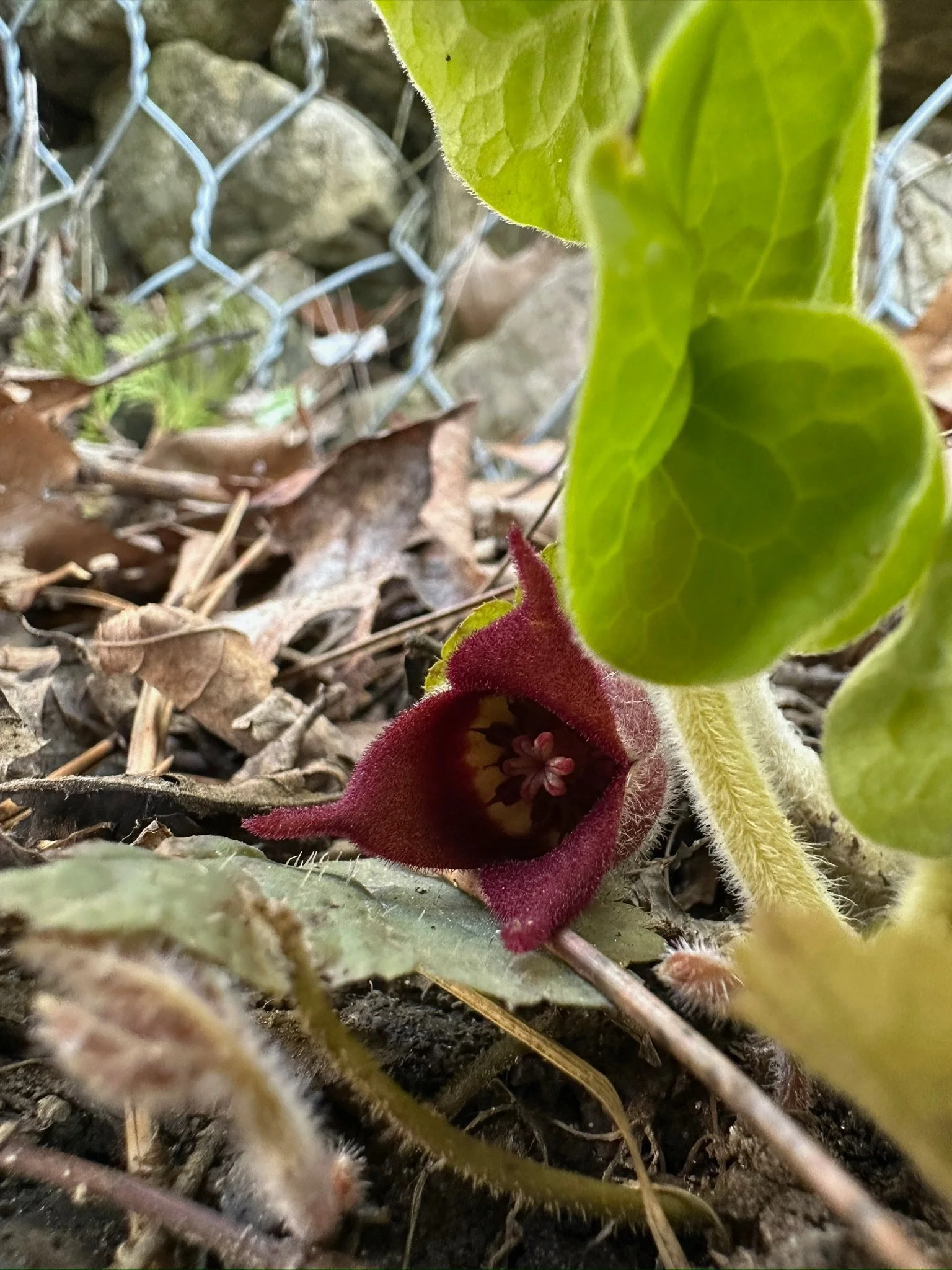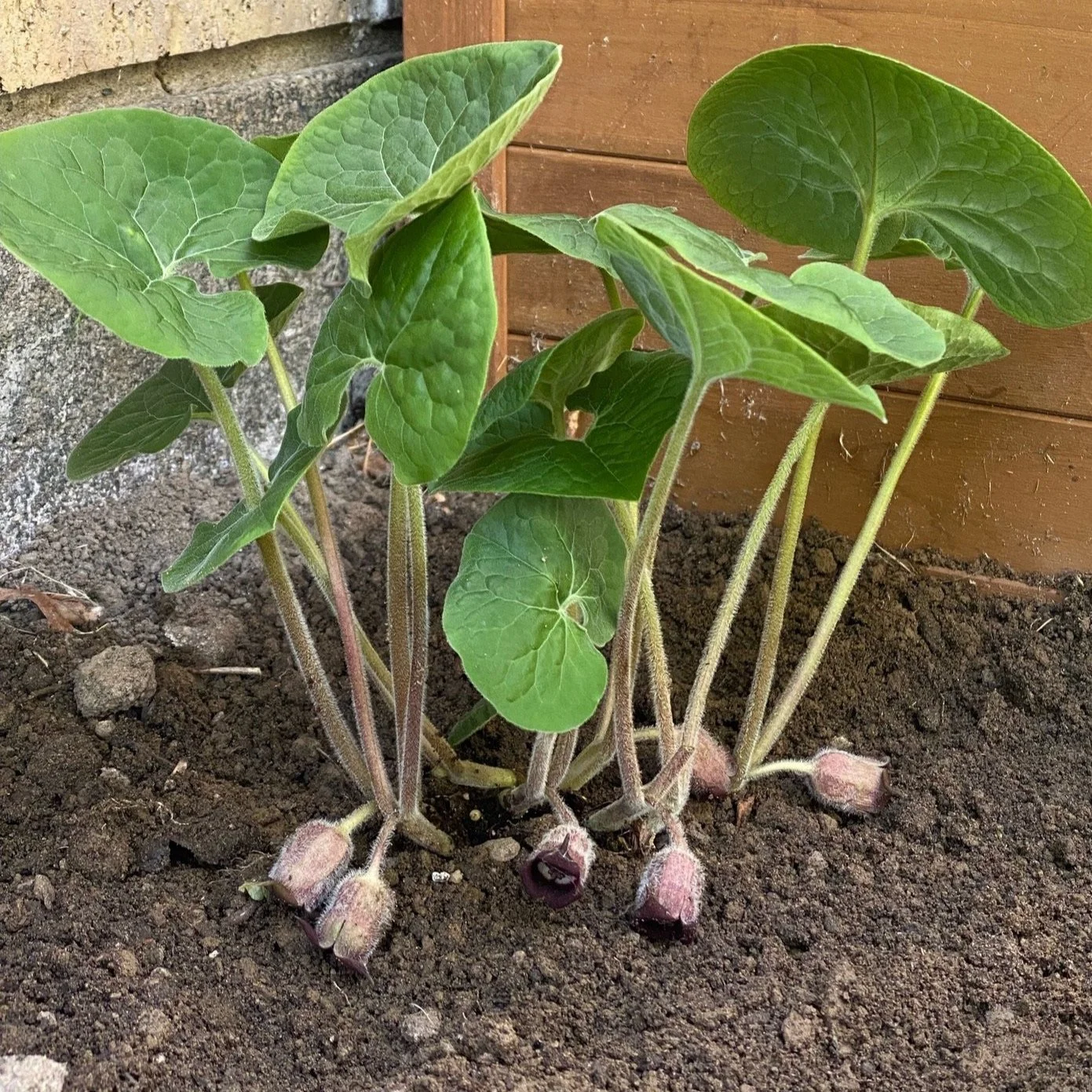Wild Ginger
Wild Ginger (Asarum canadense)
I may not be the tallest plant in the forest, but I’ve carved out a special place for myself beneath Ontario’s towering trees. My heart-shaped leaves stretch across the ground, forming a lush, green carpet in the shade.
When spring arrives, I unveil my dark purple flowers, tucking them near my base, close to the soil. You might not notice them at first, but the flies and fungus gnats certainly do! While bees may pass me by, these tiny insects help ensure my flowers get the care they need.
But my most reliable friends? The ants. Each of my seeds carries a special treat—a fleshy elaiosome packed with nutrients. Ants can’t resist it! They carry my seeds back to their nests, feasting on the elaiosome before discarding the seed in the perfect spot for new growth. Thanks to them, I can expand slowly but steadily—sometimes up to 35 meters away!
Long before gardens and greenhouses, Indigenous communities, including the Haudenosaunee and Anishinaabe, found value in my rhizomes. They relied on me for medicinal remedies, using my roots to ease colds, fevers, and digestive troubles. Some even discovered my flavour could enhance meat dishes! But be careful! Eat too much of me and I’ll make you sick!
I do more than just survive—I protect the forest floor, creating stability in rich woodland soils. And if you’re patient enough, you can bring me into your own garden. Though my seeds need cold stratification and take two years to sprout, dividing my rhizomes is a much faster way to help me settle in.
I may not tower over the landscape, but I have my own way of making a mark. Look closely, and you’ll see—I have stories to tell.
Curious about cooking with wild ginger? Be sure to check our Recipes section on the Harvest It page—we’re always adding new ideas, and you might just find wild ginger featured there soon!
Take, for example, this mouthwatering wild ginger ice cream, perfectly paired with peach and almond cake, all nestled atop a staghorn sumac crumble.



